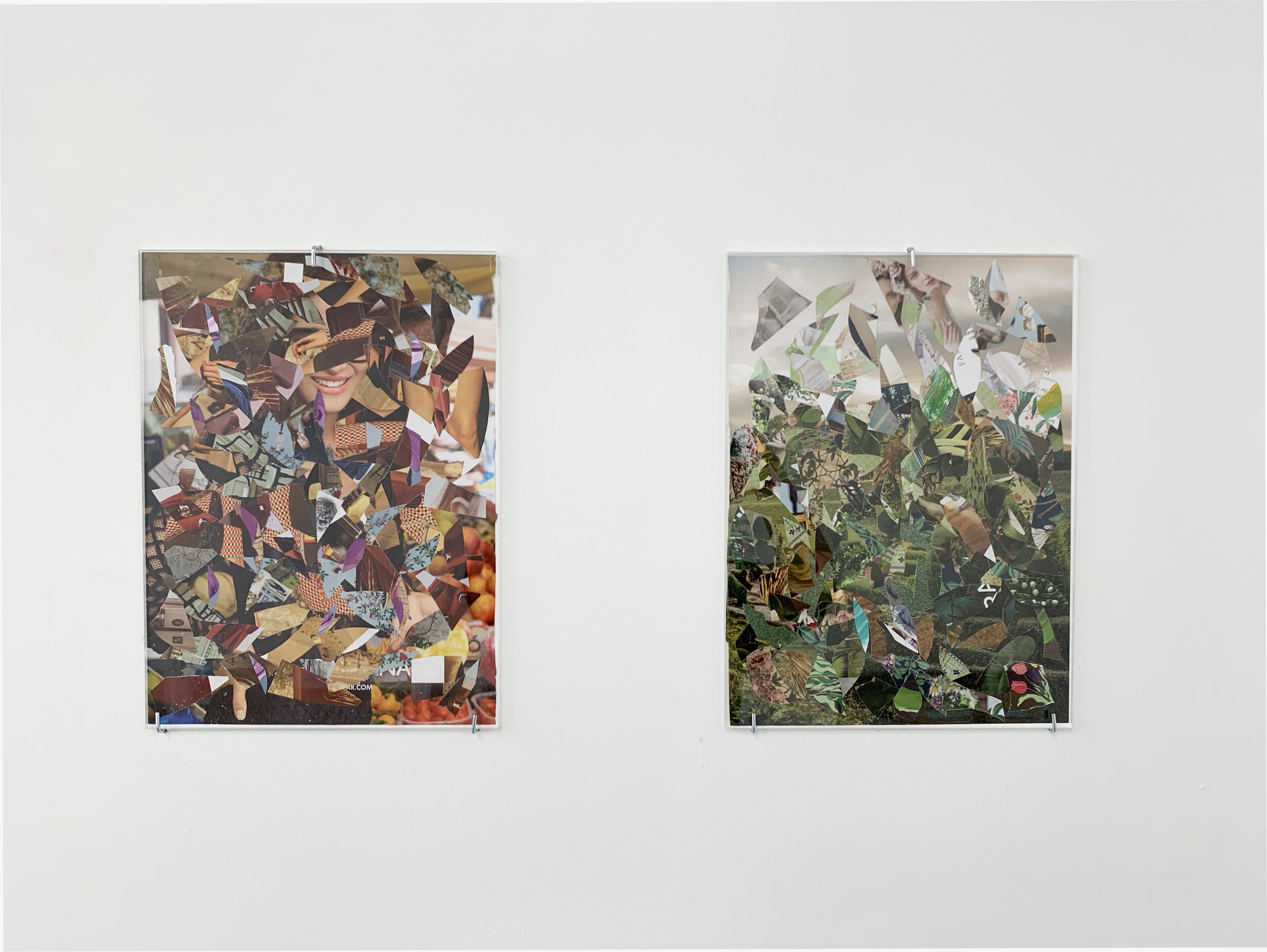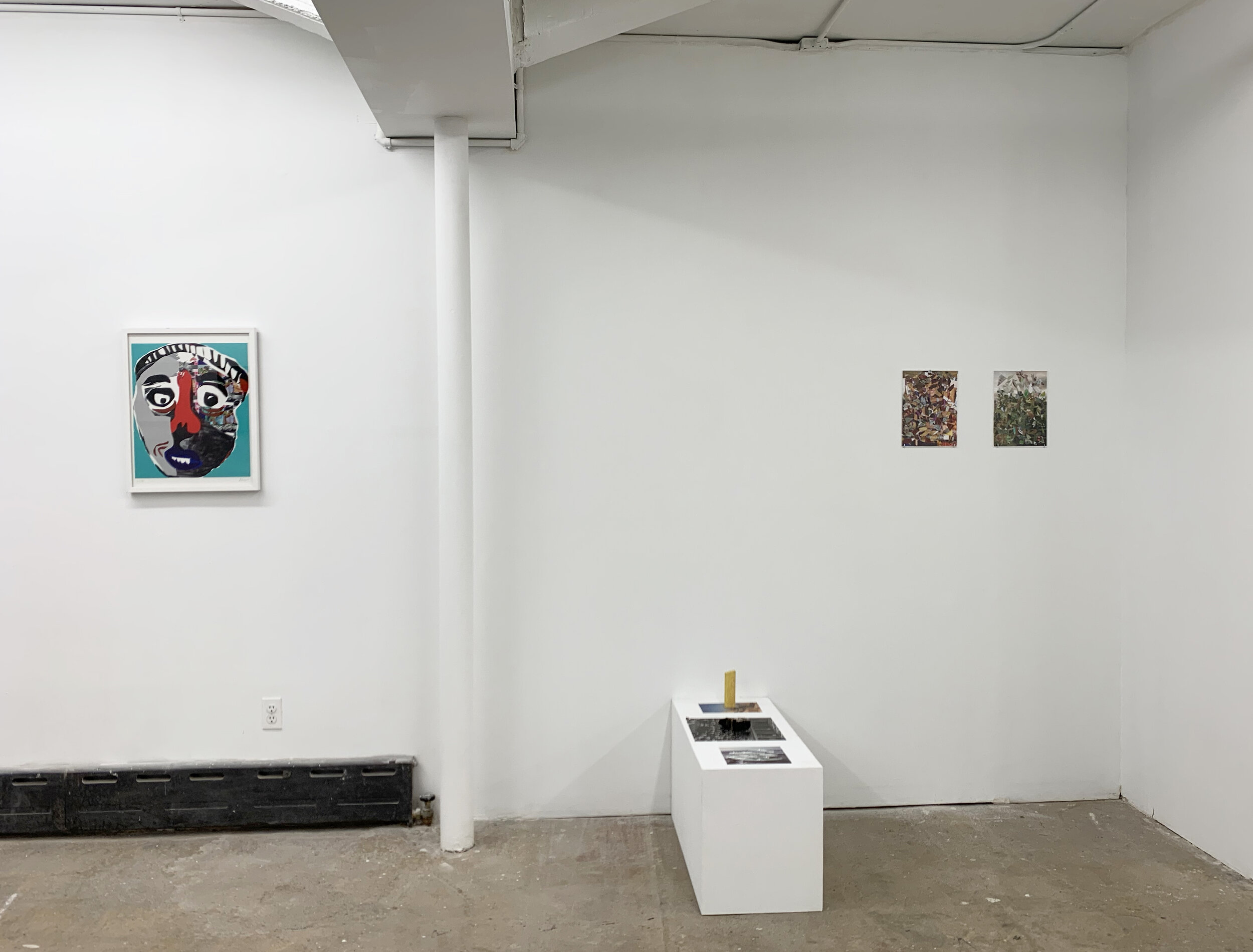ARTICHOKE
Frederick Hayes, Rusty Shackleford, Catherine Street
November 5 - December 5, 2020
Collage reflexively teaches gestalt — a single work that also reveals the individual elements. The title of this exhibition is loosely based on the life of Frank Olson, whose Collage Method utilized a progressive sequence of activities and interviews in order to piece together a larger picture about the logic of psychological development and the connections we associate with different experiences and emotions.
Frederick Hayes is an artist that creates artworks by fostering relationships between the true self and the projected self, the environmental outside and the psyche, the person and the place. Often manifested as portraiture and cityscapes on canvas, the works in this exhibition are digital collages that bring together both aspects into the same frame. While buildings, environments, and people depicted seem like they could be from any place (or any sizable city, for that matter), Hayes says that the city where they are made “plays a major role in how they feel”. As Hayes integrates the person with the landscape, he also highlights how outside circumstances can play a role in forming and informing a persona.
Rusty Shackleford creates collages, sculptures and arrangements that investigate the relationship between image, scale, light, and form. Working with images primarily from found magazines, Shackleford creates arrangements with miscellaneous objects that interact and interrupt. In doing so, he highlights the interior qualities of the image: the unrecognized geometry, the flow of the composition, or its seemingly innate connection to the objects. Shackleford’s assemblage pieces are displayed low to the ground, highlighting marginal spaces and giving the viewer a different perspective to view the works. Shackleford’s work overturns traditional constraints of material, medium, and method and speaks directly to his viewer using undiscussed yet universal semaphores.
Catherine Street’s newest works combine collage, painting, film and performance. The body is an ongoing focus for the artist, linking works on paper to performance and film. Drawing from the designed images of fashion magazines, these collages explore a blending of the body and its environment. As these figures are layered, silhouetted, and dissipated into the background, the work isn’t about shattering ; it’s a slow dissolution into a boundary-less self. Street’s practice is about the relationship between body and mind; a meditative approach to assembling collage, a slow focus on each individual body part as it’s relaxed and resolved. Street seeks “to create a surface that is both fragmented and unified, where vestiges of the body vibrate alongside plants and landscapes.”
Collage is synecdochic of the creative process. It’s our process made visual. We pull from our influences and inspirations, using the fragments of what came before in search of something new.






